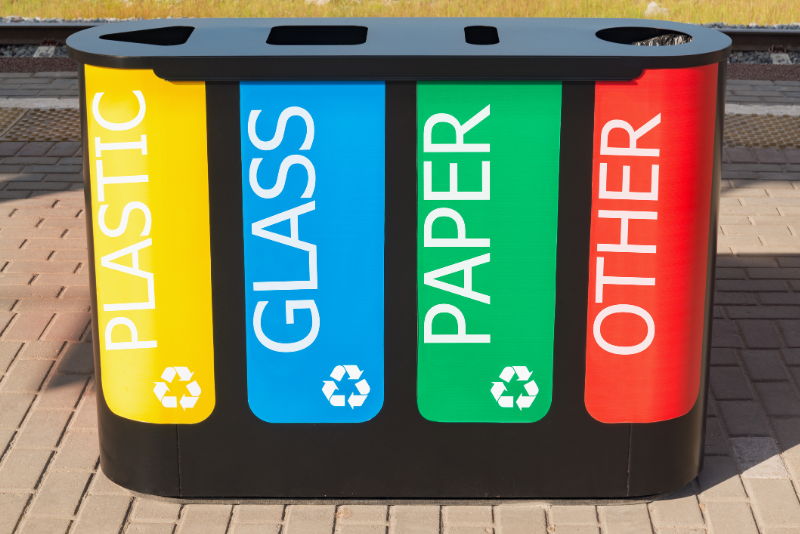
Imagine a world where your banana peel becomes fertilizer for your garden, your plastic bottle transforms into a cosy fleece jacket, and food scraps magically turn into clean energy. Sounds futuristic? Not quite! This eco-friendly reality is closer than you think, and the key lies in a simple yet powerful concept: waste segregation.
Separating for Success: Dry vs. Wet
Traditionally, we toss everything into a single bin, destined for a one-way trip to overflowing landfills. Waste segregation breaks this cycle by dividing our discards into two main categories: dry waste and wet waste.
Dry Waste
Think paper products, plastic bottles, metal cans, and glass. These non-biodegradable materials hold immense potential for recycling into new products.
Wet Waste
Food scraps, yard trimmings, and other organic materials fall under this category. They can be composted, transforming into a nutrient-rich fertilizer that nourishes our plants.
The Domino Effect of Segregation
Separating our waste sets off a chain reaction of positive impacts:
Enhanced Recycling
When dry waste isn’t contaminated by food scraps or liquids, it becomes easier to sort and reprocess accurately. This translates to higher-quality recycled materials that can be reborn into new products, reducing our reliance on virgin resources.
Composting Powerhouse
Wet waste, when composted, creates nutrient-rich fertilizer. This organic alternative to chemical fertilizers not only benefits our gardens but also reduces our dependence on non-renewable resources.
Landfill Lifeline
Segregation diverts a significant portion of waste from landfills.
This translates to less land being used for disposal, reduced methane emissions (a potent greenhouse gas), and a longer lifespan for these critical facilities.
Beyond the Bins: A Ripple Effect
The benefits of waste segregation extend far beyond our bins. It fosters a sense of environmental responsibility, reminding us of the valuable resources hidden within our everyday discards. This awareness can inspire us to make more sustainable choices in our daily lives, from reducing consumption to opting for reusable products.
Taking Action: It Starts with You!
Waste segregation is a powerful tool that anyone can wield. Here’s how you can get started:
Embrace the Bin Duo: Invest in separate bins for dry and wet waste. Label them clearly to avoid confusion.
Get to Know Your Recyclables: Familiarise yourself with what materials your local recycling program accepts. This ensures your dry waste reaches the right destination for proper reprocessing.
Composting Champions: Explore composting options in your area.
Many communities offer composting programs or resources to help residents set up their compost bins.
By separating our waste, we become active participants in creating a more sustainable future. So, the next time you reach for the bin, remember: it’s not just throwing something away, it’s about transforming waste into a resource for a healthier planet. Let’s segregate, recycle, and compost our way to a greener tomorrow!